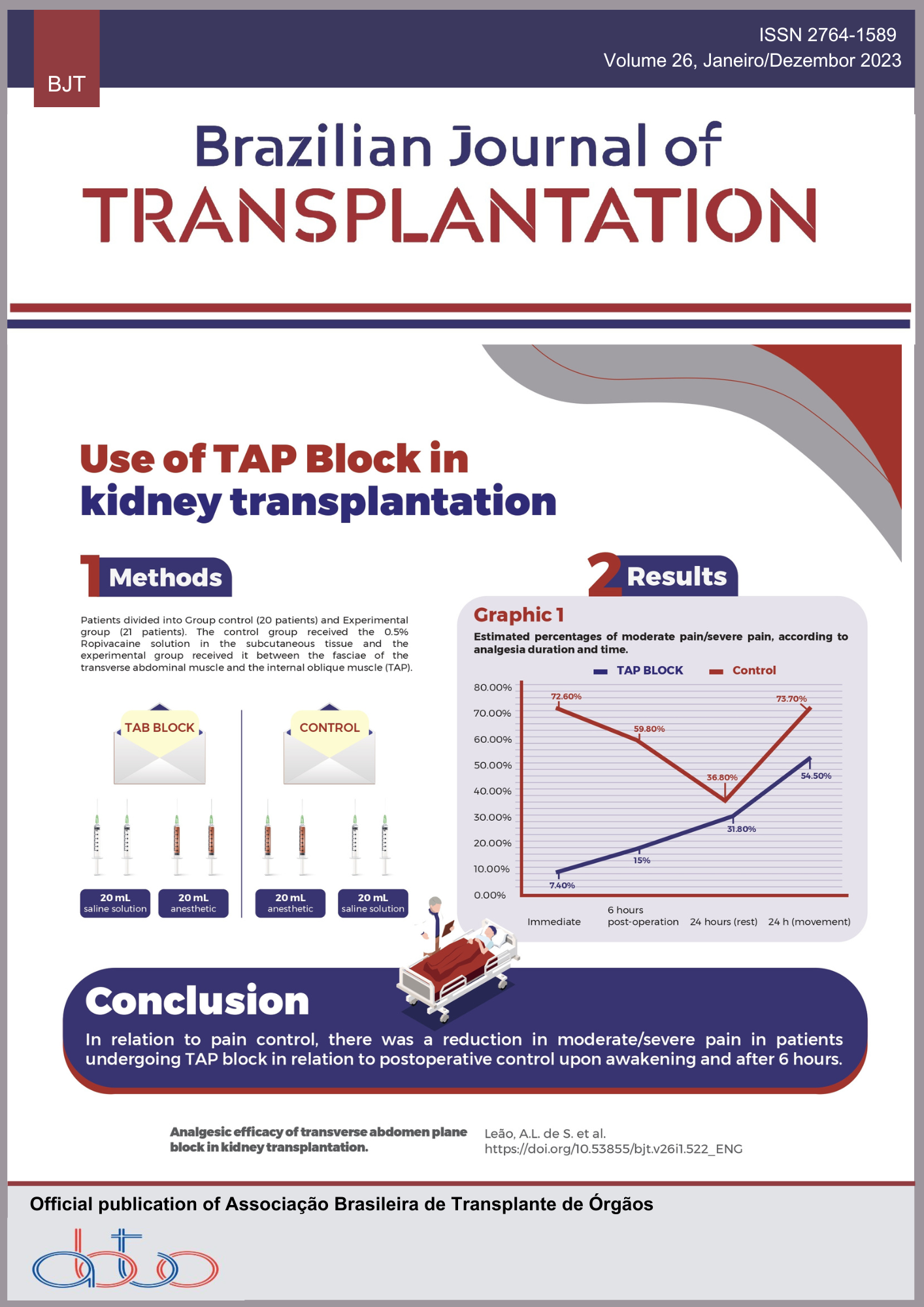Analysis of Access to Liver Transplantation in Different Brazilian Regions from 2018 to 2022: A Cross-Sectional Study
Keywords:
Transplantation, Brazil, General Surgery, EquityAbstract
Introduction: Although the simulated liver allocation model for liver transplantation has enabled a more equal distribution of surgeries in Brazil, it remains a subject of controversy whether access to the procedure is fair across various regions of the country. To assess this, data from patients who moved to different regions to undergo liver transplants were analyzed. Methods: A retrospective cross-sectional study was carried out on liver transplantation using the Brazilian Unified Health System’s IT department (DATASUS) data from 2018 to 2022, and sorted the procedures/patients by region using Software PAST 4.12 (University of Oslo). Results: 88,78% (n = 198) of patients from the northern region needed to migrate, while in the central-west region, 23.39% (n = 84) of patients needed to migrate to other regions. In three states of the northeast region, 100% (n = 117) of the patients needed to migrate to states within the same region. In Tukey’s pairwise test: Midwest and Southeast p=0.03, North and Southeast p=0.008, Northeast and Southeast p= 0.02. Conclusions: There is a noticeable disparity in access and the need for patient migration from the North, Northeast, and Central-West regions, which may affect the prognosis and result in extra expenses for patients from these regions.
Downloads
Downloads
Published
How to Cite
Issue
Section
License
Copyright (c) 2023 Laynara Vitória da Silva Vieira, Jordana Fonseca Reis, Elise Lardo Leitão, Bárbara Nissara de Araújo França, Monique Benemérita Vilela Gomes, Sabrina Dalfior Salvador, Raquel Oliveira de Sousa Silva

This work is licensed under a Creative Commons Attribution 4.0 International License.









